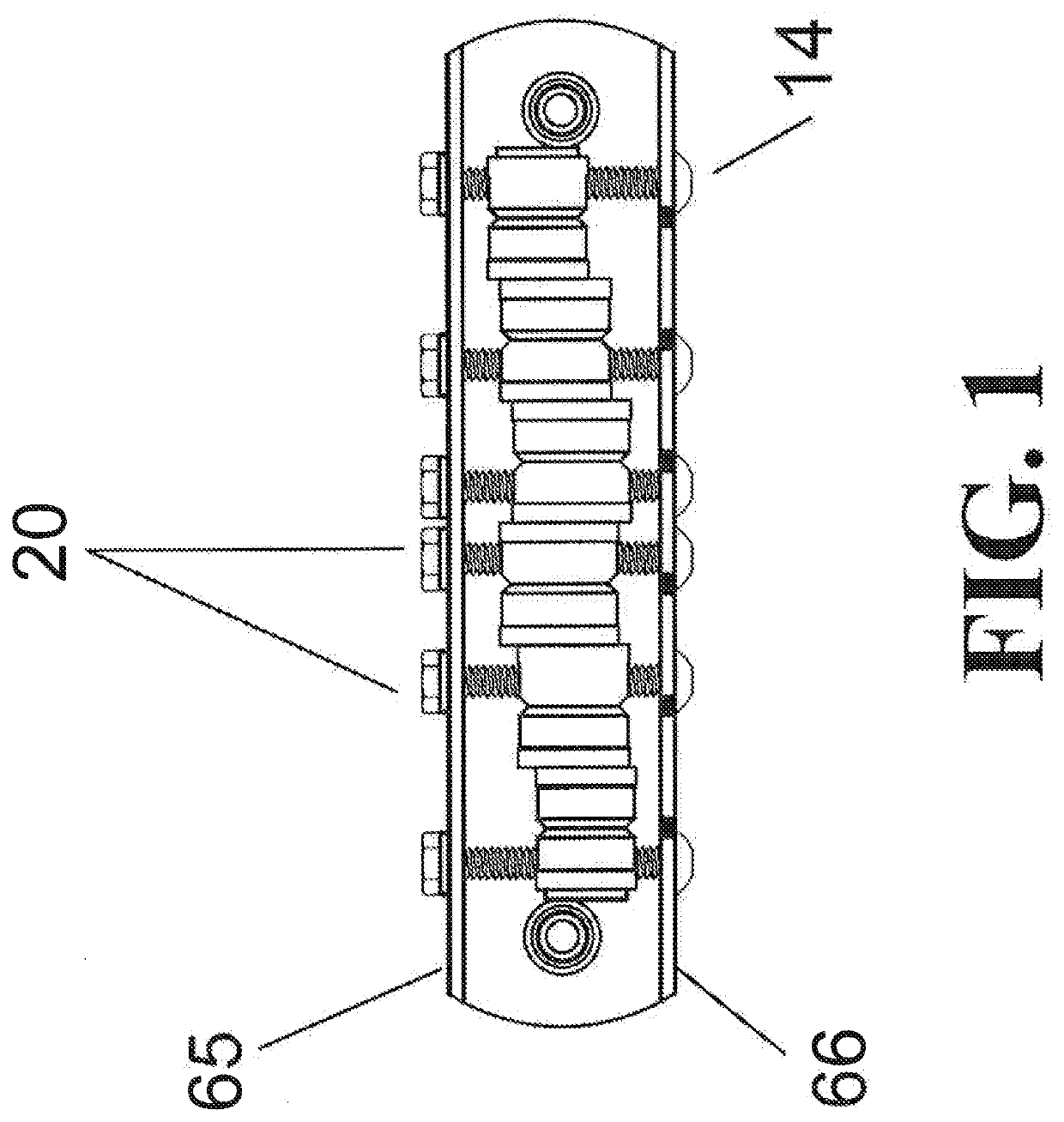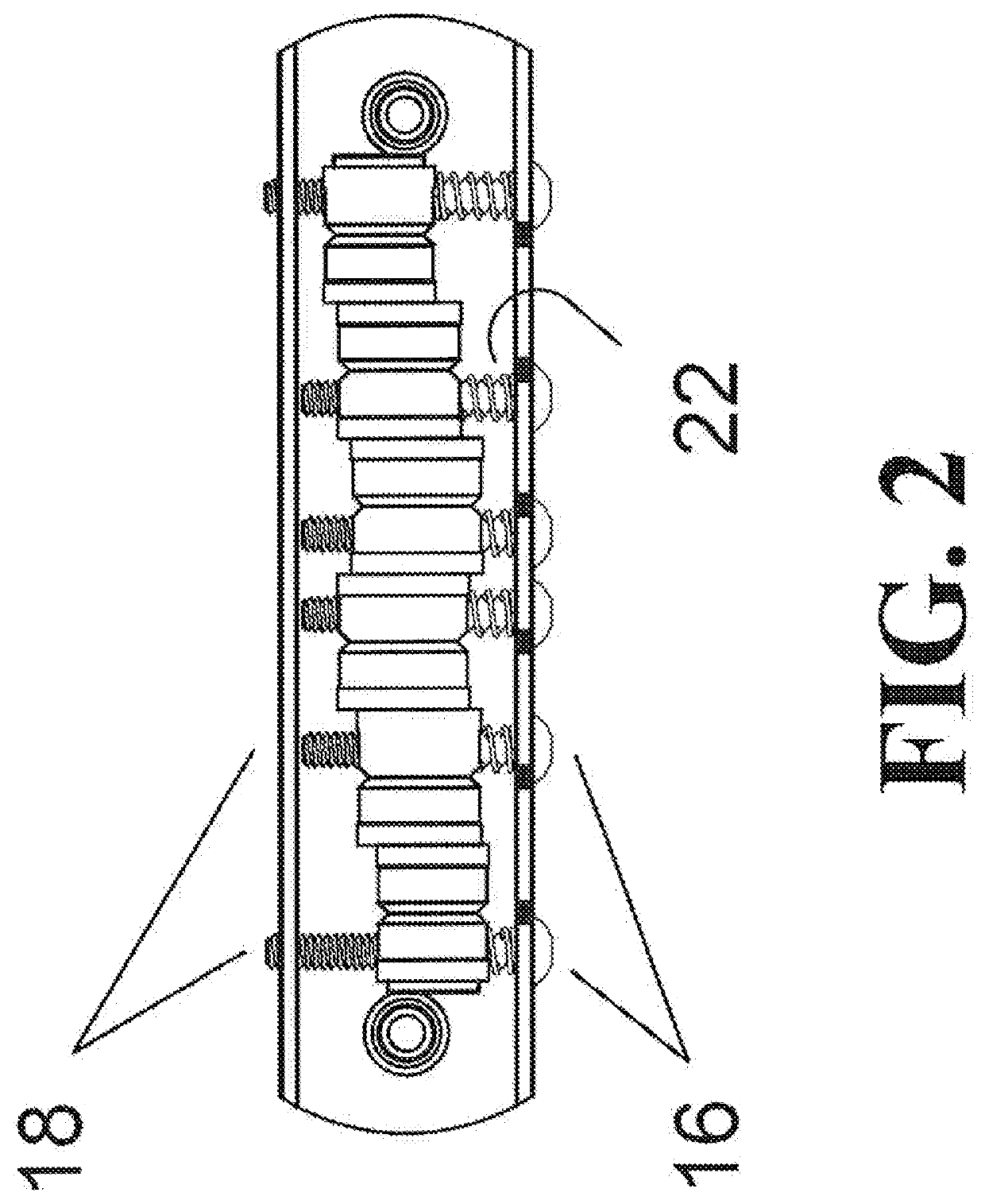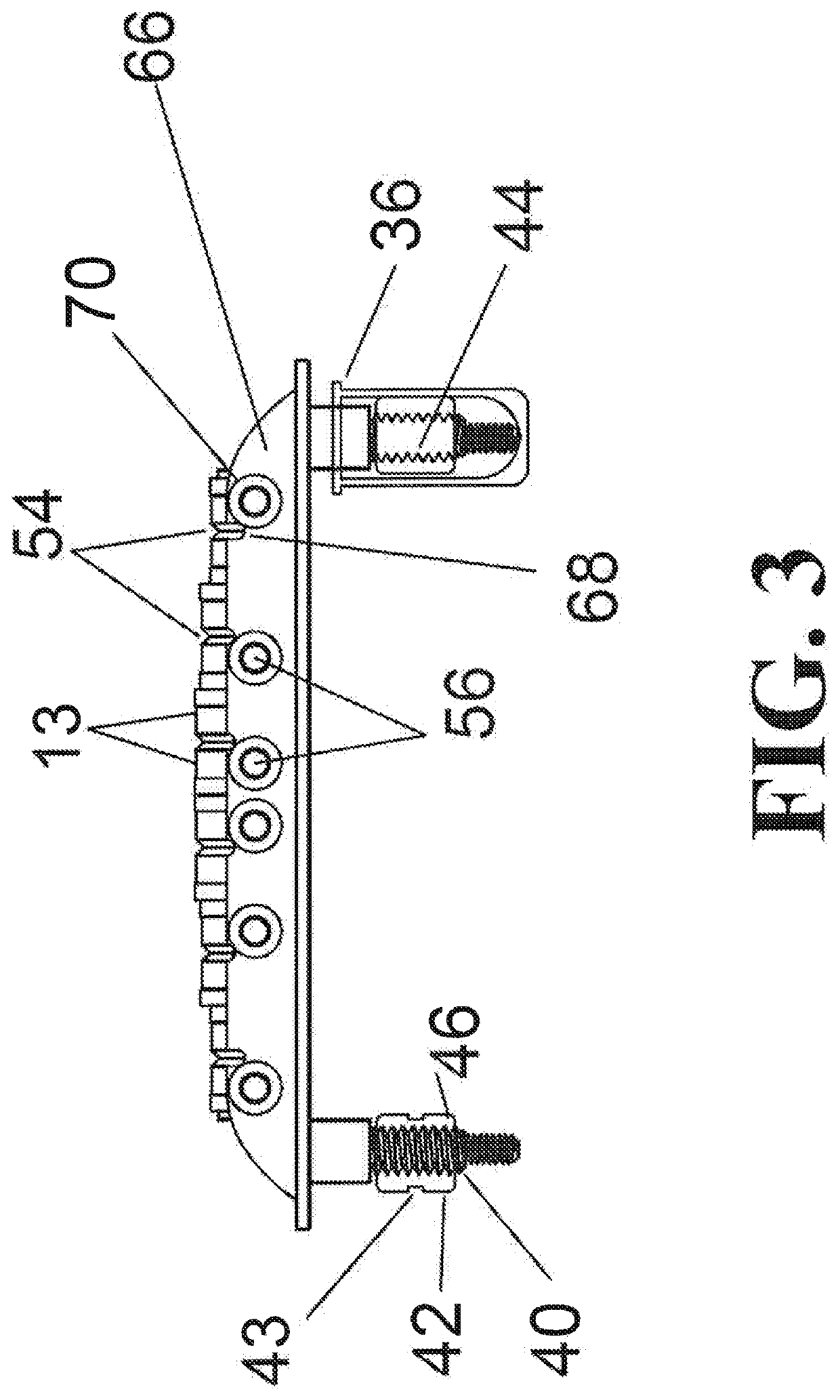Adjustable bridge for stringed instrument device and method
a stringed instrument and adjustable technology, applied in stringed musical instruments, instruments, guitars, etc., can solve the problems of affecting the effective use of vibrato, affecting the performance of the instrument, and many components of the original design no longer yield optimal performance, so as to achieve greater clearance and greater string clearance
- Summary
- Abstract
- Description
- Claims
- Application Information
AI Technical Summary
Benefits of technology
Problems solved by technology
Method used
Image
Examples
Embodiment Construction
[0028]The present invention is concerned with an adjustable bridge for a stringed instrument. The adjustable bridge may advantageously be retrofit into an instrument having an existing standard bridge design, or the adjustable bridge may be installed during construction of the stringed instrument.
[0029]As shown in FIG. 6, the stringed instrument 2 may be a six-string electric guitar. However, it will be understood that the adjustable bridge described herein may also be used in conjunction with other stringed instruments, both electric and acoustic, and with any number of strings. Stringed instrument 2 generally comprises a body 38, a fingerboard (or neck) 26, a headstock 50, and a plurality of strings 64 each defining a string path between the body 38 and headstock 50. In particular, each of the plurality of strings 64 is attached at one end to a tailpiece 52 within the body 38 and at the other end to a tuning peg 51 within the headstock 50. The strings 64 are lifted and supported o...
PUM
 Login to View More
Login to View More Abstract
Description
Claims
Application Information
 Login to View More
Login to View More - R&D
- Intellectual Property
- Life Sciences
- Materials
- Tech Scout
- Unparalleled Data Quality
- Higher Quality Content
- 60% Fewer Hallucinations
Browse by: Latest US Patents, China's latest patents, Technical Efficacy Thesaurus, Application Domain, Technology Topic, Popular Technical Reports.
© 2025 PatSnap. All rights reserved.Legal|Privacy policy|Modern Slavery Act Transparency Statement|Sitemap|About US| Contact US: help@patsnap.com



